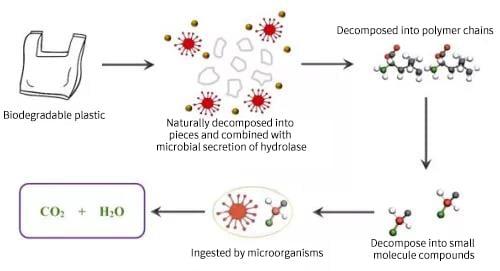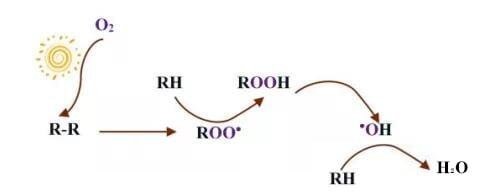At present, there are four main degradation principles of degradable plastics: biodegradation, photodegradation, photo-biodegradation, and water degradation.
It is generally believed that biodegradation mainly passes through two processes. First, the plastic is broken down into small pieces under natural conditions, and the hydrolase secreted by microorganisms is combined with the surface of the small pieces of plastic to hydrolyze the polymer chains into small molecular weight compounds, such as organic acids and sugars. Then, small molecular compounds are injected into the body by microorganisms, and after metabolism, they become microorganisms or energy for microbial activities, and finally into water (H2O) and carbon dioxide (CO2).

Biodegradation is an extremely complex process, with biophysical, biochemical effects and other physical and chemical effects (such as hydrolysis, oxidation, etc.). It has similar properties to similar traditional plastics, with good degradability and high safety.
Photodegradation is mainly through the action of light to break the molecular chain to achieve the degradation process. Under the irradiation of sunlight (wavelength 290~400nm), the photosensitizer or photosensitive group in the plastic excites electronic activity, and the molecular chain undergoes a photochemical reaction. The molecular chain undergoes a photo-oxidation reaction under a certain temperature, humidity and oxygen environment, and the molecular chain is converted into soluble small molecular substances, and then degradation is achieved.

Due to the limitation of light conditions, photodegradation has greater limitations. Therefore, photodegradation is only suitable for areas with long sunlight and sufficient sunlight.

